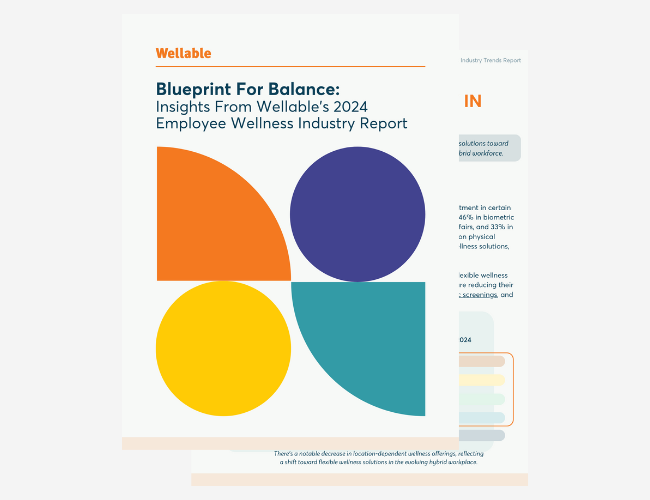Despite uncertainty around integrating employee wellness and engagement programs into company cultures, employers continue to view these strategies as a top priority for business success. A recent survey (State of the Industry: Employee Wellbeing, Culture and Engagement) of more than 600 human resource and benefit leaders explored and revealed key relationships between the three main drivers of positive employee experiences: wellbeing, culture, and engagement. Through the analysis, organizations can see a measurable impact on business performance and outcomes by investing in these areas. Below are some interesting statistics from the survey.

Wellbeing
- 78% of organizations view employee wellbeing as a critical component of their business strategy
- 74% of employers with strategic, holistic wellbeing programs saw improvements in employee satisfaction and 65% saw improvements in organizational culture
One thing the survey did not mention but Wellable finds is becoming increasingly true is that wellness continues to be seen, by both employers and employees, as a critical benefit. Similar to 401 (k) plans and dental and vision insurance, employees are considering wellness benefits in their employment decisions. With more and more employers offering wellness benefits, those without them are at a strategic disadvantage when it comes to recruiting and retaining employees.
Culture
- 95% of organizations view culture as important for driving business outcomes
- 80% of organizations plan to improve corporate culture in the coming year
These statistics are not surprising. However, employers struggle with defining and implementing their culture. Groups with multiple office or remote employees have even more challenges to address when managing culture across the entire employee base.
Engagement
- Engagement investments have a strong impact on business results with 56% of companies seeing improvements in employee satisfaction, 40% reporting enhanced company culture, and 14% realizing revenue growth as a result of employee engagement programs
- Improving employee engagement remains a key organizational focus, with 88% of respondents calling it a top priority
The value derived from an engaged workforce is widely accepted, but similar to culture, it is a concept that employers struggle with promoting. An engaged employee is defined as an individual who is “fully absorbed by and enthusiastic about their work and so takes positive action to further the organization’s reputation and interests.” Employee wellness and engagement are often discussed together because employees who feel better about themselves and trust that their employer is genuinely concerned about their wellbeing will be more enthusiastic on promoting the vision of the organization. As employers try to improve employee engagement, incorporating wellness and other initiatives as part of a multi-faceted strategy will be needed to address the challenges they currently face.












